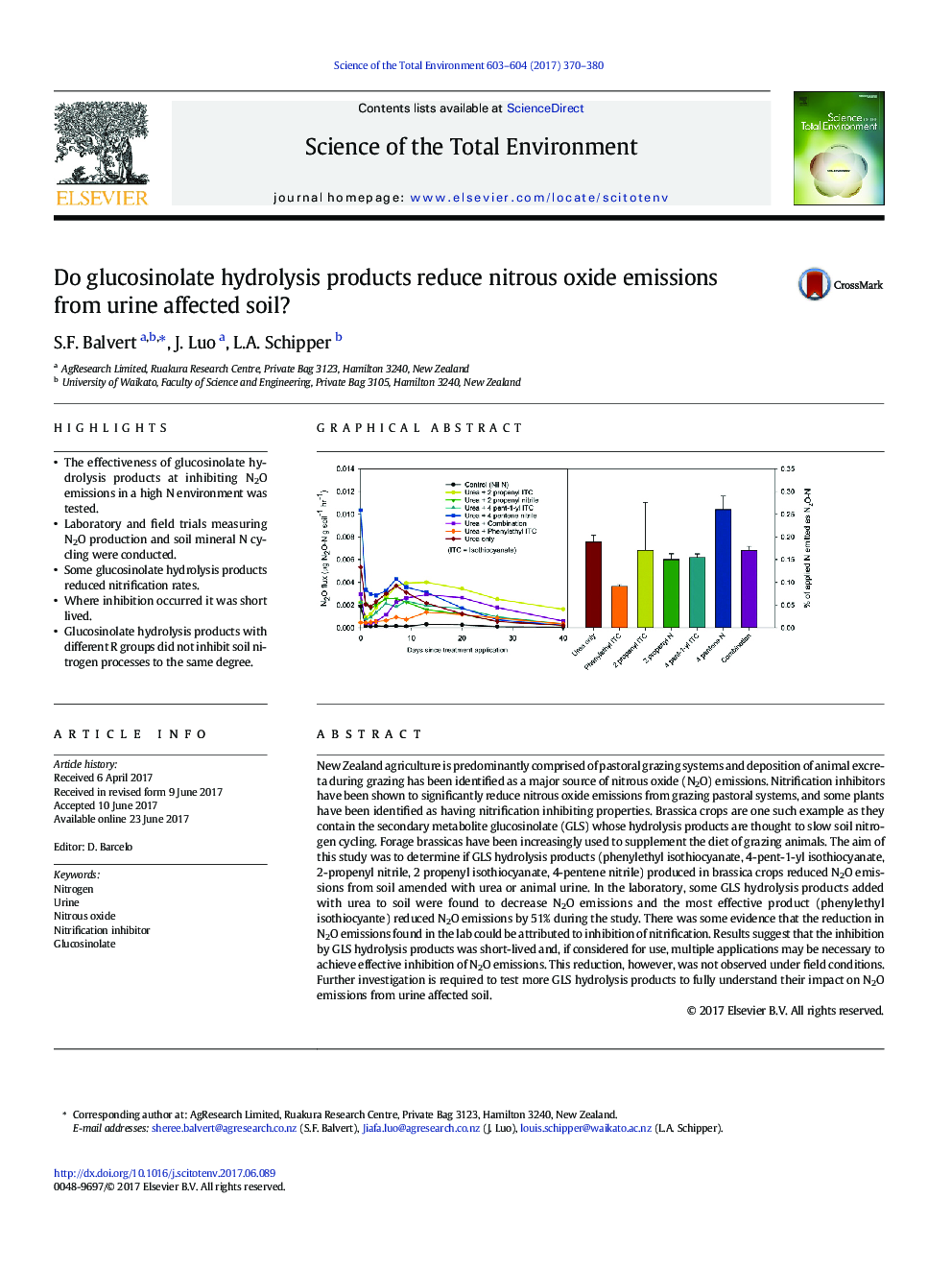| کد مقاله | کد نشریه | سال انتشار | مقاله انگلیسی | نسخه تمام متن |
|---|---|---|---|---|
| 5750307 | 1619696 | 2017 | 11 صفحه PDF | دانلود رایگان |
- The effectiveness of glucosinolate hydrolysis products at inhibiting N2O emissions in a high N environment was tested.
- Laboratory and field trials measuring N2O production and soil mineral N cycling were conducted.
- Some glucosinolate hydrolysis products reduced nitrification rates.
- Where inhibition occurred it was short lived.
- Glucosinolate hydrolysis products with different R groups did not inhibit soil nitrogen processes to the same degree.
New Zealand agriculture is predominantly comprised of pastoral grazing systems and deposition of animal excreta during grazing has been identified as a major source of nitrous oxide (N2O) emissions. Nitrification inhibitors have been shown to significantly reduce nitrous oxide emissions from grazing pastoral systems, and some plants have been identified as having nitrification inhibiting properties. Brassica crops are one such example as they contain the secondary metabolite glucosinolate (GLS) whose hydrolysis products are thought to slow soil nitrogen cycling. Forage brassicas have been increasingly used to supplement the diet of grazing animals. The aim of this study was to determine if GLS hydrolysis products (phenylethyl isothiocyanate, 4-pent-1-yl isothiocyanate, 2-propenyl nitrile, 2 propenyl isothiocyanate, 4-pentene nitrile) produced in brassica crops reduced N2O emissions from soil amended with urea or animal urine. In the laboratory, some GLS hydrolysis products added with urea to soil were found to decrease N2O emissions and the most effective product (phenylethyl isothiocyante) reduced N2O emissions by 51% during the study. There was some evidence that the reduction in N2O emissions found in the lab could be attributed to inhibition of nitrification. Results suggest that the inhibition by GLS hydrolysis products was short-lived and, if considered for use, multiple applications may be necessary to achieve effective inhibition of N2O emissions. This reduction, however, was not observed under field conditions. Further investigation is required to test more GLS hydrolysis products to fully understand their impact on N2O emissions from urine affected soil.
258
Journal: Science of The Total Environment - Volumes 603â604, 15 December 2017, Pages 370-380
